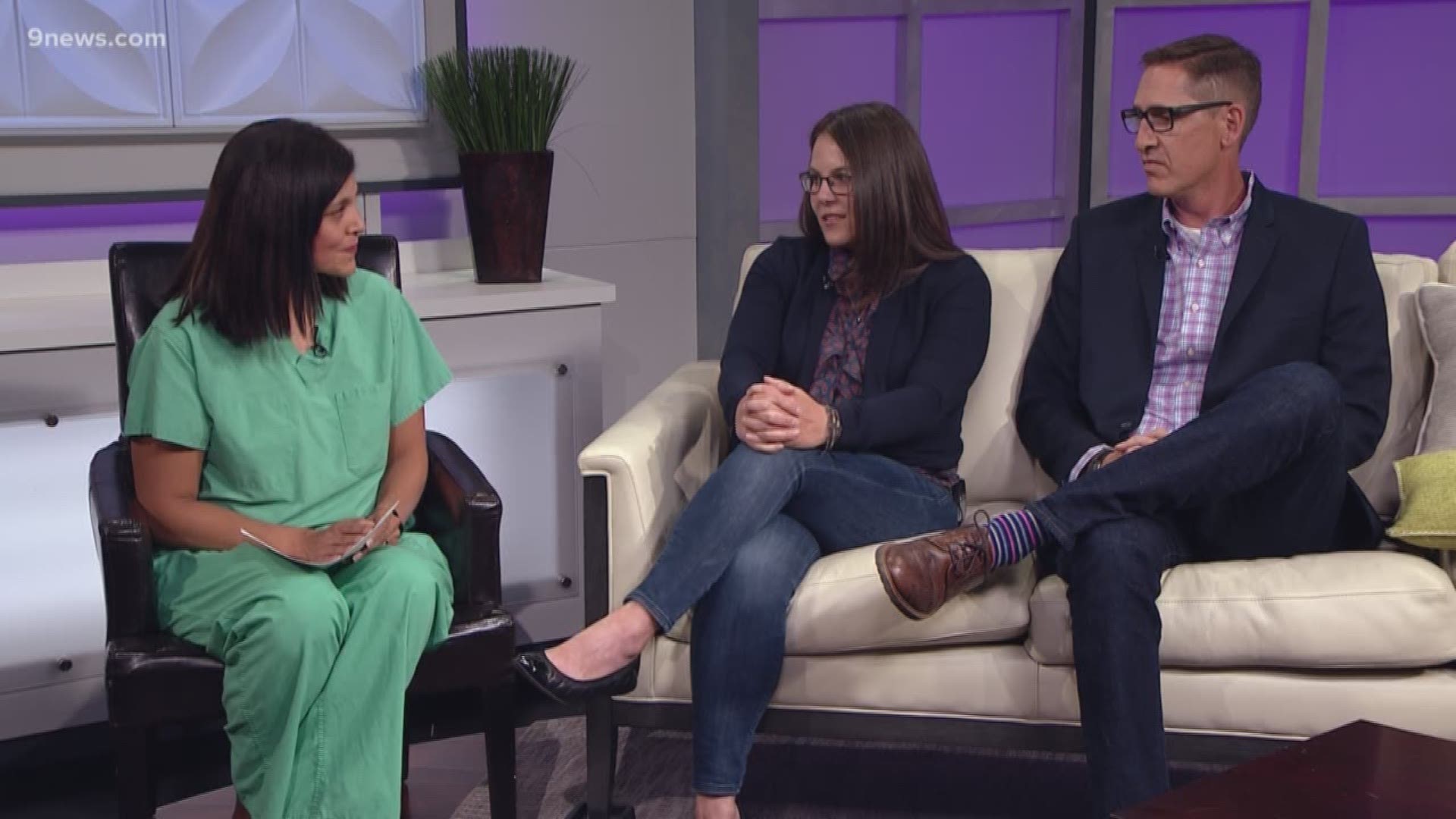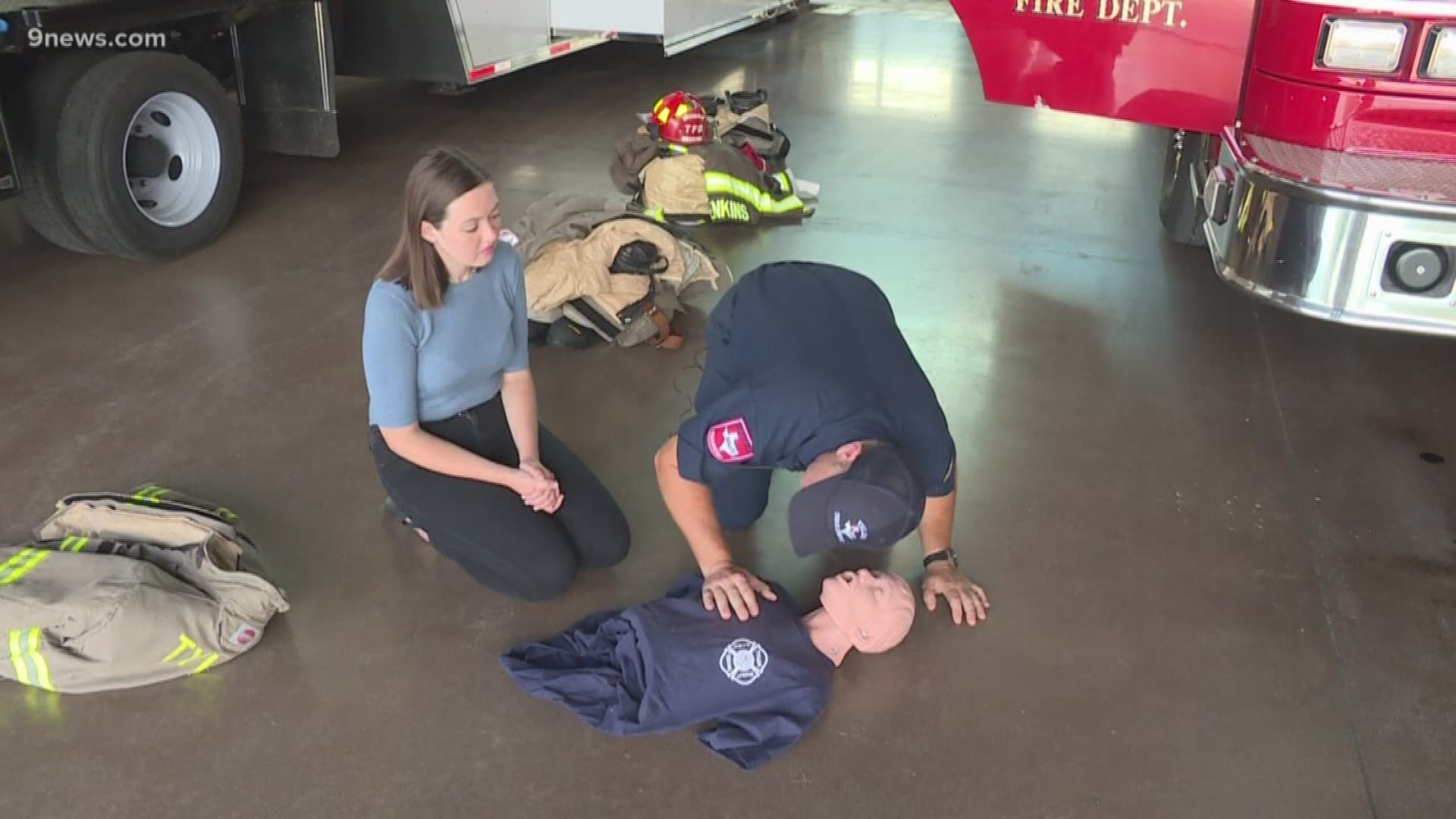DENVER — In the U.S., every hour 40 people will have a cardiac arrest outside of the hospital. Cardiopulmonary resuscitation (CPR) and using an Automated External Defibrillator (AED) can help increase a victim's chance of survival. For every one minute you don’t get CPR, your chances of surviving a cardiac arrest go down by 10%. So, get your hands on the chest and do CPR.
Just 2-and-a-half years ago, Mike and Lyndsey were at home watching TV when Mike suddenly turned to Lyndsey and said he wasn't feeling well. Lyndsey looked over and saw her boyfriend breathing funny and possibly seizing. She quickly called 911 and was instructed by the dispatcher to do CPR. Castle Rock Fire and Rescue arrived within a few minutes, took over doing CPR and shocked Mike’s heart. Mike is alive today because of the quick actions Lyndsey took, the dispatcher encouraging CPR, and fire arriving within minutes with a defibrillator.
How is a cardiac arrest different than a heart attack?
A heart attack is when the heart’s blood vessels become blocked and blood flow does not go to the heart muscle. A sudden cardiac arrest is when the heart completely stops and no blood or oxygen can get to the brain or vital organs.
Take two minutes and learn how to save your life. About 80% of cardiac arrests occur at home. The life you save is likely that of your family or friends.
Steps to hands-only CPR
If you see a teen or adult suddenly collapse:
- Call 911 and send someone to get an AED
- Push hard and fast in the center of the chest at 100-120 compressions per minute
Hands-only CPR can be performed by untrained bystanders while they are waiting for help to arrive. It should only be performed on teens or adults. Push hard and fast, at least 2 inches deep with the chest compressions in the center of the chest (at the sternum/breastbone) at a rate of 100-120 compression per minute. Children and infants still need to have breaths performed. More information at www.heart.org/handsonlycpr
Learn how to do CPR and use an AED.
Follow 9NEWS Medical Expert Dr. Comilla Sasson on Facebook and Twitter. Have a medical question or health topic idea? Email Dr. Comilla at comilla.sasson@9news.com
SUGGESTED VIDEOS | Local stories from 9NEWS


